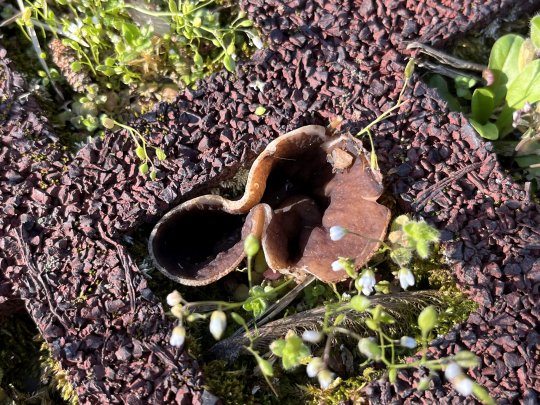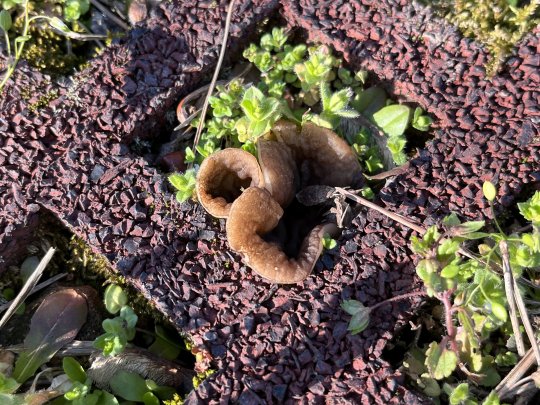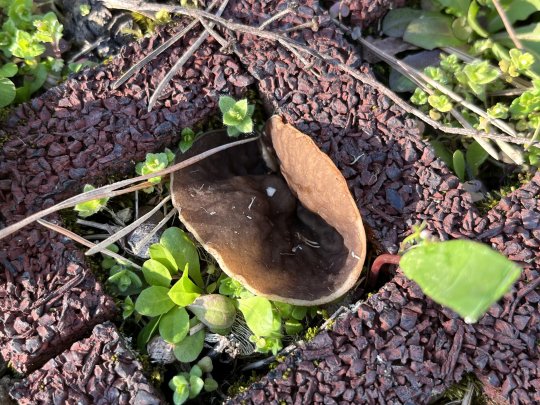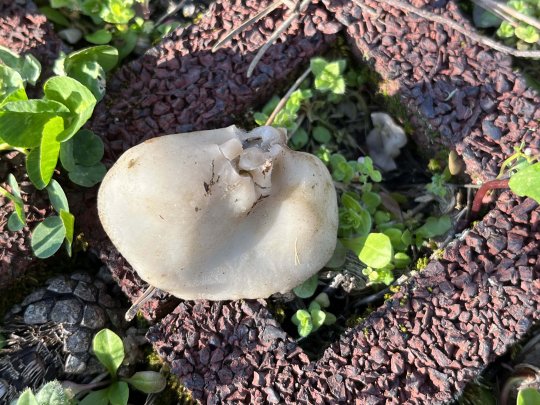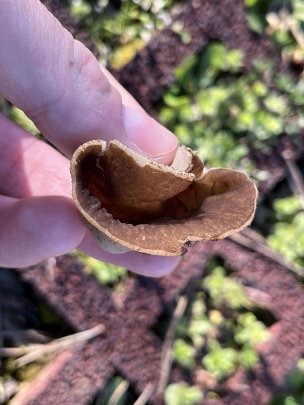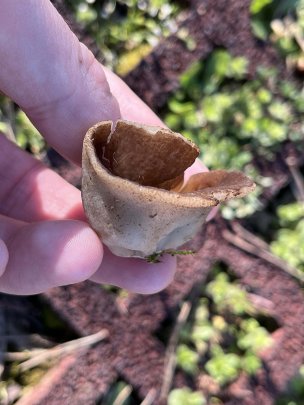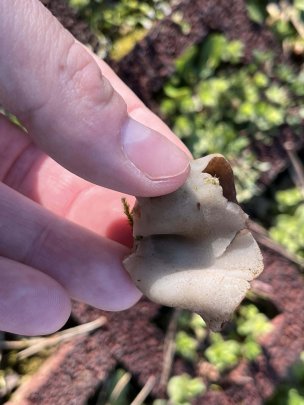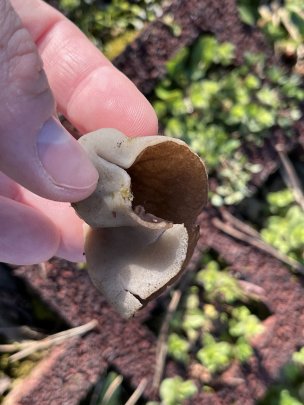Discina perlata
Description
If you're trying to tell Discina perlata apart from other cup-shaped mushrooms, there are a few things you can look for. Its top part is usually reddish brown or dark brown, and its spores have these cool little pointy things sticking out from the ends. Sometimes it even has a short, chubby stalk. You can find it all by its lonesome or in groups, hanging out on rotting wood or dirt in places where there are conifer trees. In western mountains, you might even spot it near melting snowbanks! It's found in temperate areas in North America and Europe.
Some folks say you can eat them but it can have something called gyromitrin, which can be dangerous if you eat too much of it. So, if you're gonna chow down on some Discina perlata, make sure you boil it first with a little baking soda.
Common names: Pig's Ears, German (Auwald-Scheibchenlorchel, Schildförmige Laubwald-Lorchel), France (Grande pézize, Pézize perlée).
Mushroom Identification
-
Fruiting Body
The fruiting body can reach up to 2.76 inches (7 cm) in diameter and starts out cup-shaped or bowl-shaped when young, but becomes irregularly saucer-shaped as it matures. The upper surface is brown to reddish brown, darkening to dark brown or black in raised areas. The surface can be smooth or wavy, wrinkled, or bumpy. The undersurface is whitish to pale grayish brown or yellowish and can be bald or very finely hairy.
-
Stem
If present, the stem can reach up to 1.97 inches (5 cm) in length and 1.18 inches (3 cm) in width, is whitish, and is continuous with the undersurface, usually with broad ribs.
-
Spore Print
Whitish.
-
Habitat
This species grows alone or in groups and obtains nutrients from decaying matter. It is found on the ground but is often located near or on decaying wood and stumps. In western North America, it is primarily found under conifer trees, while it can be found under both conifers and hardwoods east of the Rocky Mountains. It typically fruits in the spring and is distributed widely throughout North America and Europe.
-
Microscopic Features
Spores 27.5-45.5 x 11.5-16 µ; fusoid; usually with one prominent oil droplet (sometimes with two or three droplets); smooth or roughened; apiculi pointed, extending up to 5.5 µ (best seen in a water mount). Asci 8-spored. Paraphyses with orangish to orange-brown granular contents; clavate or capitate to subcapitate; 6-9 µ wide.
Look-Alikes
-
This mushroom is more deeply veined. Has smooth spores and is usually found in deciduous woods. To distinguish it from other similar Discina species, microscopic examination is necessary.
-
Discina macrospora and Discina apiculata
Unfortunately these can only be distinguished from Gyromitra perlata with a microscope, the spores of D. macrosopora, as the species name suggests, being larger, while those of D. apiculata having apiculi that are rounded.
Synonyms
-
Peziza perlata Fries (1822), Systema mycologicum, 2(1), p. 43 Sanctionnement : Fries (1822)
-
Peziza venosa O. Weberbauer (1873), Die pilze Nord-Deutschlands, mit besonderer berücksichtigung Schlesiens, 1, p. 5, tab. 2, fig. 1
-
Rhizina helvetica Fuckel (1874) [1873-74], Jahrbücher des nassauischen vereins für naturkunde, 27-28, p. 66
-
Peziza repanda var. perlata(Fries) Quélet (1886), Enchiridion fungorum in Europa media et praesertim in Gallia vigentium, p. 276
-
Discina helvetica (Fuckel) Saccardo (1889), Sylloge fungorum omnium hucusque cognitorum, 8, p. 103
-
Gyromitra perlata (Fries) Harmaja (1969), Karstenia, 9, p. 11
-
Gyromitra mcknightii Harmaja (1986), Karstenia, 26(2), p. 42
-
Discina ancilis
-
Gyromitra ancilis
Video
Photo copyright:
All photos were taken by the Ultimate Mushroom team and can be used for your own purposes under the Attribution-ShareAlike 4.0 International license.

